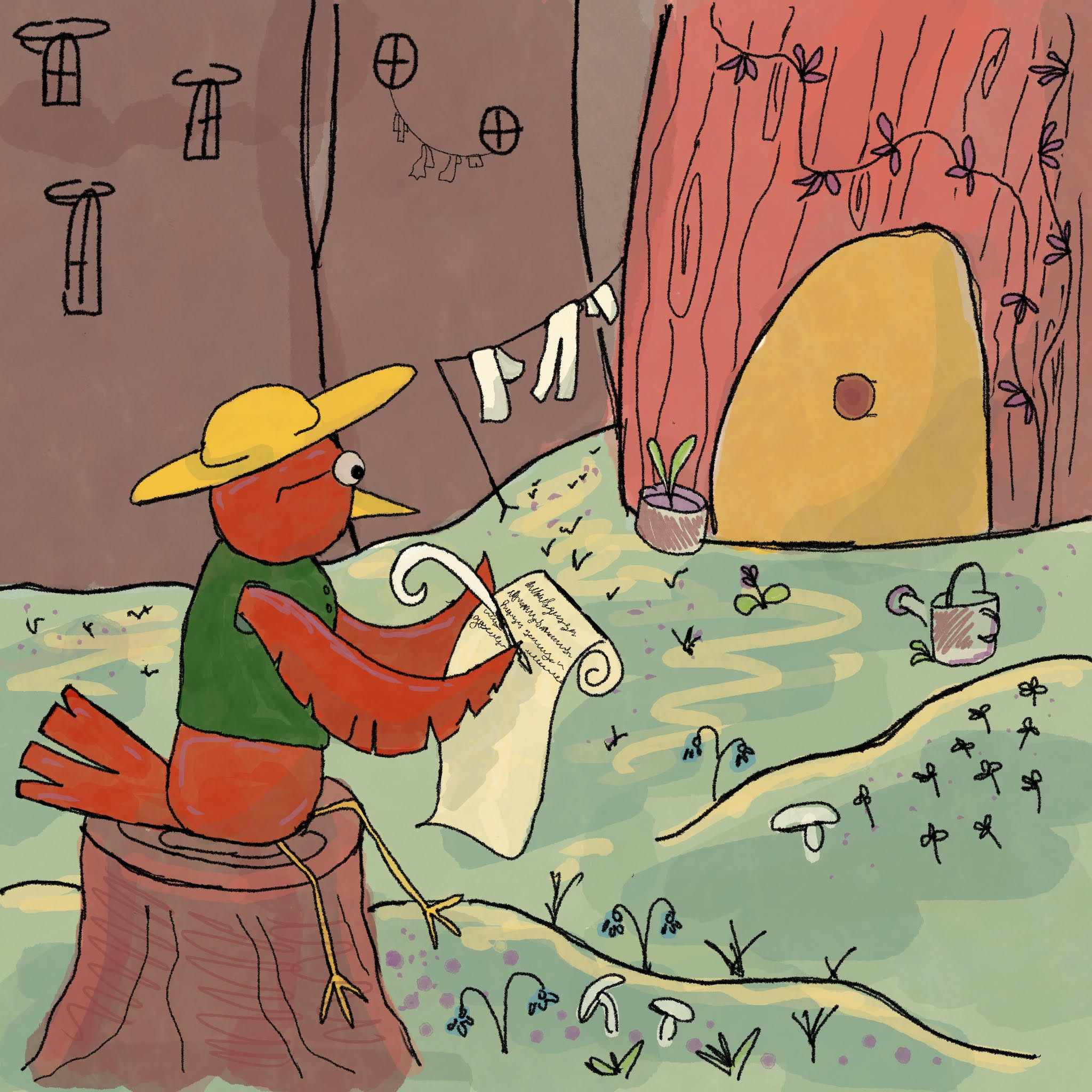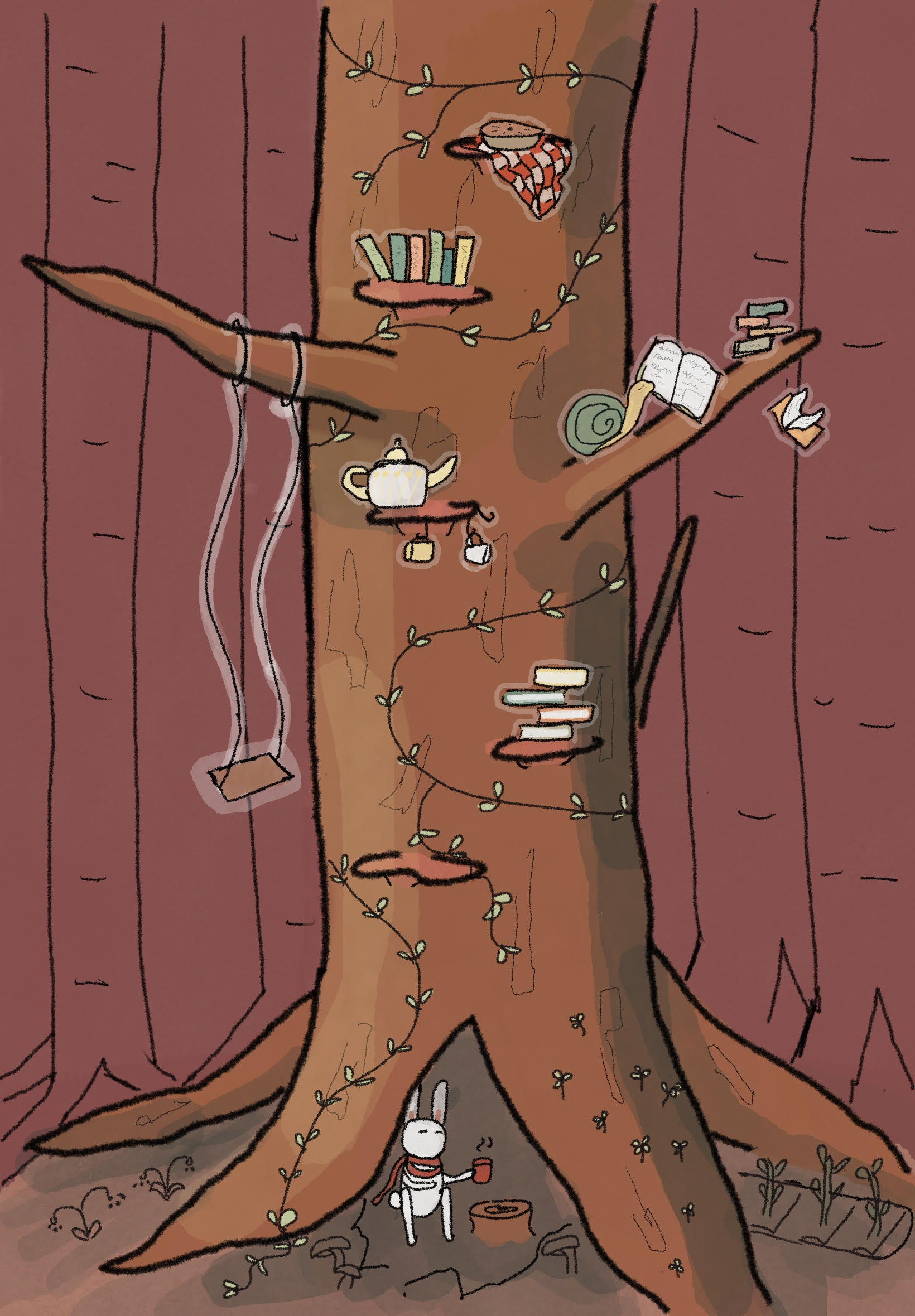
Dear readers, writers, and the dreamers among you,
Why do we make art? This question crossed my mind the other day as I wandered through an art gallery in my hometown. I stared at abstract doodles framed neatly on the walls, each one whispering in an enigmatic language only the artist seemed to understand. I leaned in closer, noticing the distinct strokes of paint, each bristle defining a line of thought, a feeling. Suddenly, it all seemed to make sense—or so I told myself, as though the work was revealing a story meant just for me.
How does a person keep creating art for an entire lifetime? The critiques, the competition, the vulnerability of exposing your soul to the world. You must find a delicate balance between fully embracing the creative process and maintaining a sense of perspective—engaging deeply with your work while managing the emotional intensity it brings. And yet, that’s the beautiful paradox of creation. The thrill of creating is in the act itself, not the outcome. It’s in the comfort it brings, the freedom it offers, like waking up and falling deeper into a dream at the same time. The more you create, the more alive you truly feel.
As a writer, I often ask myself these questions, especially during moments of self-doubt or writer’s block. For me, the passion and persistence for the craft have always been a part of who I am. Why let anything remain dull when you can reshape it through imagination into something worth writing about?
Sarah Wolfson, author and course lecturer at the McGill Writing Centre, shares this sentiment, saying, “I write because my brain is captivated by the world in ways that come through me as language.” For Wolfson, writing is not just an artistic endeavour, but an interpretive lens through which an artist sees their life.
I’ve always felt that I use writing and my imagination to explore my own longings, and to offer readers a glimpse of their desires mirrored in the stories I tell. As a child, I wished for whimsical adventures, fairytale moments, and coming-of-age fantasies. Sunset road trips with your best friends, arms surfing freely out the window, conversations drowning out the radio’s melodies. I dreamt of secret hideaways, treehouses to escape from weekend chores. I wanted the thrill of first love, where every glance between a pair of hopeful eyes felt electric, sending sparks flying into the air. These ideas made my heart ache with a sweet kind of longing, the magic I hoped to find just around the corner. Many of these whimsical memories came to life beneath pen and paper, despite being silly little moments that never happened at all.

However, as I’ve gotten older, it’s become harder to tap into the boundless imagination I once had, making it more difficult to craft truly creative stories. I have spent painful hours trying to shape memories and moments into something real. I gaze at the empty page placed down before me, ignoring the mountains of crumpled white sheets and remnants of failed attempts—broken pencils, smeared lead, and eraser bits strewn across the desk. Frustration seeps through my skin, my hands gripping the pen tightly, my fingers burdened by the weight of self-doubt. The sweat pooling on my brow feels as futile as the blank page staring back at me.
Gazing at the wall before me, I window shop for new lives, imagining a version of myself that writes with ease and grace. I yearn for perfection, comparing my work to others, hoping it will transform into something great.
This kind of tension and pressure is terrible for a writer—it tamps down your curiosity, and locks away the whimsy and fun of the creative process. To recapture my childlike love for stories, I had to change my approach, and recognize that writing isn’t about waiting for some divine inspiration to strike; it’s about embracing the messy, joyful, and often unpredictable journey of turning ideas into stories.
To explain how my life is shaped by writing, I want to outline my creative process in three steps, showing how ideas take shape from initial inspiration to drafting and refining the piece. By illustrating these stages, I hope to convey what being a writer means to me: Crafting something real out of imagined moments and finding inspiration in the mundane. While the artistic process differs for everyone, the happiness and fulfilment that come from creating art are universal. Living as an artist transforms everyday events into something extraordinary.
1. Finding your inspiration
Inspiration is the spark that sets the story ablaze. But where does this elusive muse come from?
Reflecting on her own creative process, Rachel Barker, U2 Arts, shared, “Often I am inspired by an existing piece of literature or art that strikes a chord with me and propels me to write about something. For example, I watched a Fran Lebowitz interview where she spoke on how people love musicians because they give us the ability to express the inexpressible. I found this beautiful and true, and it inspired me to write about the power of music as it relates to memory.”
Understanding the true nature of inspiration reveals its profound impact on our creative journey. The world around us is a constant source of wonder. Let curiosity be your guide and write about the things that interest you the most. For me, inspiration finds its way into my mind at the most seemingly insignificant moments.
Schooom! As the train doors swiftly shut themselves behind me, I found myself upon the moving platform, accompanied by the familiar melody of chiming bells marking my journey to the next destination.
To my surprise, the station thrummed with an unexpected liveliness for an autumnal Sunday morning. Amidst the commuters, a tapestry of purpose: The workers embarking on weekend office endeavours and the waiters rushing to make it in time for their midday shifts. An abundance of committed churchgoers sit adorned in their finest attire, long coats and fitted slacks for the gentlemen and pantyhose and dainty dress shoes for the women. The churchgoers scatter among the hustlers, the waiters, the readers of the newspaper, and the headphone boppers who likely missed their stop because their music was playing so loud they simply forgot where they were going. It seems as though there are two types of people who ride the train: Those who are always in a rush to get to their final destination, and those who do not have a care in the world.
Often, I find comfort in the quiet contemplation of my surroundings during these commutes. As I observed the flow of commuters around, I couldn’t help but wonder where they were all going. Children clung to their parents’ arms while others swung carelessly around the underground playground of the subway car. It was as if the subway car itself was a microcosm of human desire—each person with their own unspoken stories, their eyes scanning the crowd, perhaps searching for a sense of recognition or belonging.
I reached for a crumpled up receipt in my bag, quickly scribbling down notes on the scene: the frantic shuffle, the fleeting glances, the silent quest for visibility. I wanted to return to these observations later, hoping to weave them into a narrative that captured the experience of our shared commute.
Below, I noted that I needed to get eggs at the store, and some milk too. With the practical thought lingering in my mind, it was time to get off at my stop.
2. The Writer’s Toolbox
In Stephen King’s On Writing, he advises authors to “Write with the door closed, rewrite with the door open.”
Barker echoed this sentiment, explaining, “Write without judgement, and write a lot! Do not attach your identity to what arises on the page—instead consider writing as a process with ups and downs, and ride out the downs.”
So I closed my door. Once the teapot, a porcelain relic, finally finished steeping, I carefully poured its contents into my favourite chipped mug, its edge worn smooth from years of use. My room, softly lit by an amber glow, cast gentle shadows over the rows of leather-bound books stacked neatly on my towering bookshelf. I settled into the high-backed chair at my desk, a piece that anchored the room with its worn surface and intricate wooden carvings. The window to my left framed the quiet street where ivy crept along stone-clad walls, the air still filled with the scent of fresh paper and sweet lemon tea.
Here, the first step in my creative process could begin. At this stage, it’s just you and the story. Write freely, without worrying about anyone else's opinions. Start with an outline or write down whatever comes to mind. The first draft is your playground, a space where you can explore ideas, experiment with characters, and let the plot evolve naturally.
Lydia Lepki, U2 Arts, shares her approach to sparking creativity: “I like to jot down some thoughts first, preferably on paper. Sometimes it just starts with a word and the rest falls into place after that.” And, when feeling stuck, she shares that it’s good to take a break.
“Going on a walk will do wonders. Bonus points if a sunset or sunrise is involved,” Lepki explained.
After countless hours of writing, the sun surrendered to the horizon, and the blank page was now littered with tangled commas and scratched-out adverbs. I rubbed my aching temples as they begged for a much-needed break. I grabbed my shoes and stepped outside, deciding to let the park be my escape. The sky, a portrait of soft pinks and golds, laid a dreamlike cast over the blossoming trees. As I lay in the uncut grass, I found myself watching the clouds take on new shapes. I invited the cloud people, enchanted creatures, and little fairies I dreamt up to join me. They gathered around my mind’s eye, eager to read my story, their tiny wings fluttering as they whispered newfound ideas and sprinkled their magic over the words that had felt so stuck before. There was something in the stillness of the moment, in the way the sky turned to dusk, that made me believe they would guide the story exactly where it needed to go.
Opening my front door, I let the story breathe and invite others in, allowing feedback and revisions. This is where the story becomes more than just yours—it becomes a shared experience.
3. Embracing the Writing Process
At the heart of all this introspection and crafting, I’ve realized that writing is daunting and delightful, and sometimes both at once. You start with the spark of an idea, fumble through drafts, question every sentence, but somehow—through the chaos of it all—you create something new. You breathe life into words, new words that you dreamed up on a once-blank piece of paper.
It’s easy to get wrapped up in trying to write the “perfect” piece, overthinking every word choice or doubting your creative worth. I often seek validation from peers and readers, but I’ve had to realize that perfection isn’t the goal to strive for. It’s about exploration, growth, and allowing yourself the freedom to make mistakes. This is where the real beauty of the creative process lies. Even if the final piece isn’t flawless, the act of creation lets you reinterpret your life to make the mundane magical. You must unclench your tired hands and go outside, look around, return to observing instead of being preoccupied by the final product.
Whether you’re writing, painting, or composing, reframing ordinary moments as extraordinary transforms your perception, like seeing your life through a more vibrant lens. Creativity offers a new way of looking at the world—one where even the smallest details hold meaning, and the quietest moments carry an untold story.
I stare once more at the page before me. This time, though, something feels different. The weight of self-doubt lingers, but it softens with the understanding that perfection isn’t what I need. The crumpled sheets, the broken pencils—they are all part of the process. And no matter what I write next, I continue to create anyway, trusting that somewhere in the mess, a story is waiting to unfold.
As Wolfson said, “A writer is someone who moves through the world alert to its textures and stories. So cultivate the practices of observing and thinking like a writer.”
Writing is not just about the finished piece; it’s about the journey, the act of discovering the extraordinary in the ordinary. It may seem complex at times, but the beauty of language reveals itself when you are truly immersed in the craft. After all, every unfinished sentence, every imperfect draft, is simply part of the dance between imagination and reality. And in that dance, there is always room for wonder.
With love,
Jenna 